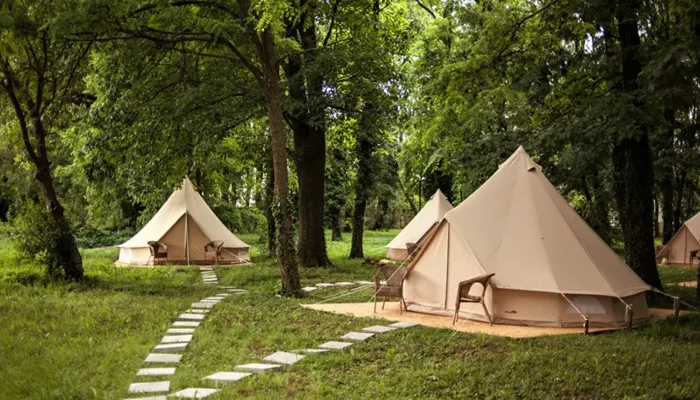Camping is a wonderful way to connect with nature. However, with this enjoyment comes the responsibility of managing waste. One essential practice in outdoor ethics is digging cat holes for human waste. In this article, we will explore what cat holes are, when to dig them, how to dig them properly, and why they are important for both campers and the environment.
What Are Cat Holes?
Cat holes are small, deep holes dug in the ground to dispose of human waste while camping. The term comes from the behavior of cats, which instinctively bury their waste. This method minimizes environmental impact and helps keep camping areas clean.
Purpose of Cat Holes
The primary purpose of cat holes is to contain waste in a way that it can decompose naturally. This prevents pollution of water sources and maintains the cleanliness of the camping area. It is a crucial practice for anyone spending time in the wilderness.
SEE ALSO: What to Bring Camping for Beginners
When to Dig Cat Holes
1. Camping in Remote Areas
If you are camping in a remote location, it is essential to dig a cat hole when you need to relieve yourself. This is especially important if there are no restroom facilities available. Remote areas typically have a lower human impact, and maintaining that is vital.
2. Hiking or Backpacking
During a long hike or backpacking trip, you may not have access to a bathroom. Whenever nature calls, it’s important to dig a cat hole instead of leaving waste on the ground. This helps preserve the natural beauty of the trail and protects wildlife.
3. Designated Campsites
Even at designated campsites, there may be times when facilities are inadequate or unavailable. In these situations, dig a cat hole to manage waste responsibly. Always check if the campsite has specific guidelines regarding waste disposal.
4. In National Parks and Wilderness Areas
Many national parks and wilderness areas require visitors to use cat holes or other designated waste disposal methods. Familiarize yourself with the rules of the area you are visiting to ensure compliance and protect the environment.
How to Dig a Cat Hole
1. Choose the Right Location
When it’s time to dig a cat hole, select a suitable location. Look for a spot that is at least 200 feet away from water sources, trails, and your campsite. This distance helps prevent contamination of water and keeps your campsite clean.
2. Gather Tools
You will need a small trowel or a sturdy stick to dig your cat hole. Make sure to pack this tool in your camping gear for easy access. If you are in a soft area, you may not need a tool at all.
3. Dig the Hole
The hole should be about 6 to 8 inches deep and 4 to 6 inches wide. This depth allows for proper decomposition while being shallow enough to dig easily. Avoid making it too deep, as this could be counterproductive.
4. Use the Hole
Once the hole is ready, you can use it as needed. After you finish, make sure to cover your waste with soil. This helps contain odors and allows the waste to break down naturally. Pack out any toilet paper or hygiene products in a sealed bag, as these do not decompose well.
5. Cover the Hole
After covering your waste, fill the hole completely with soil. Pat it down to prevent any remaining waste from being exposed. This step is crucial for keeping the area clean and discouraging animals from digging it up.
Best Practices for Cat Holes
1. Use Biodegradable Products
If you use toilet paper or any other hygiene products, choose biodegradable options. This will ensure that they break down over time and have a minimal impact on the environment. Always pack out non-biodegradable items.
2. Be Mindful of Wildlife
Animals are curious and may dig up your cat hole if they detect any scent. To minimize this risk, bury your waste well and cover it properly. Avoid digging holes in areas where wildlife is known to frequent.
3. Leave No Trace
Practicing the Leave No Trace principles is essential when camping. This means not only digging cat holes but also being mindful of your entire camping experience. Leave the area as you found it, or even better.
Why Cat Holes Matter
1. Environmental Protection
Improper waste disposal can lead to pollution of water sources, which is harmful to wildlife and humans alike. Cat holes help to mitigate this risk by allowing waste to decompose naturally, keeping ecosystems healthy.
2. Public Health
Leaving waste exposed can create health hazards. Pathogens in human waste can contaminate water supplies and lead to diseases. Cat holes help prevent these issues by ensuring waste is buried and isolated from public areas.
3. Preserving Nature’s Beauty
No one wants to see or smell human waste while enjoying nature. By using cat holes, you help preserve the natural beauty of the outdoors. This allows everyone to enjoy a clean, pleasant environment.
Conclusion
Digging cat holes is a simple yet effective way to manage human waste while camping. Understanding when to dig, how to dig properly, and why it’s important will enhance your outdoor experience and protect the environment. By following these guidelines, you contribute to keeping the wilderness pristine for future generations. Remember, respecting nature is part of being a responsible camper. Happy camping!
Related topics:
- Is It Safe to Sleep Outside Without a Tent?
- What is Camping Without a Tent Called?
- How Much Does a Portable Stove Cost?


